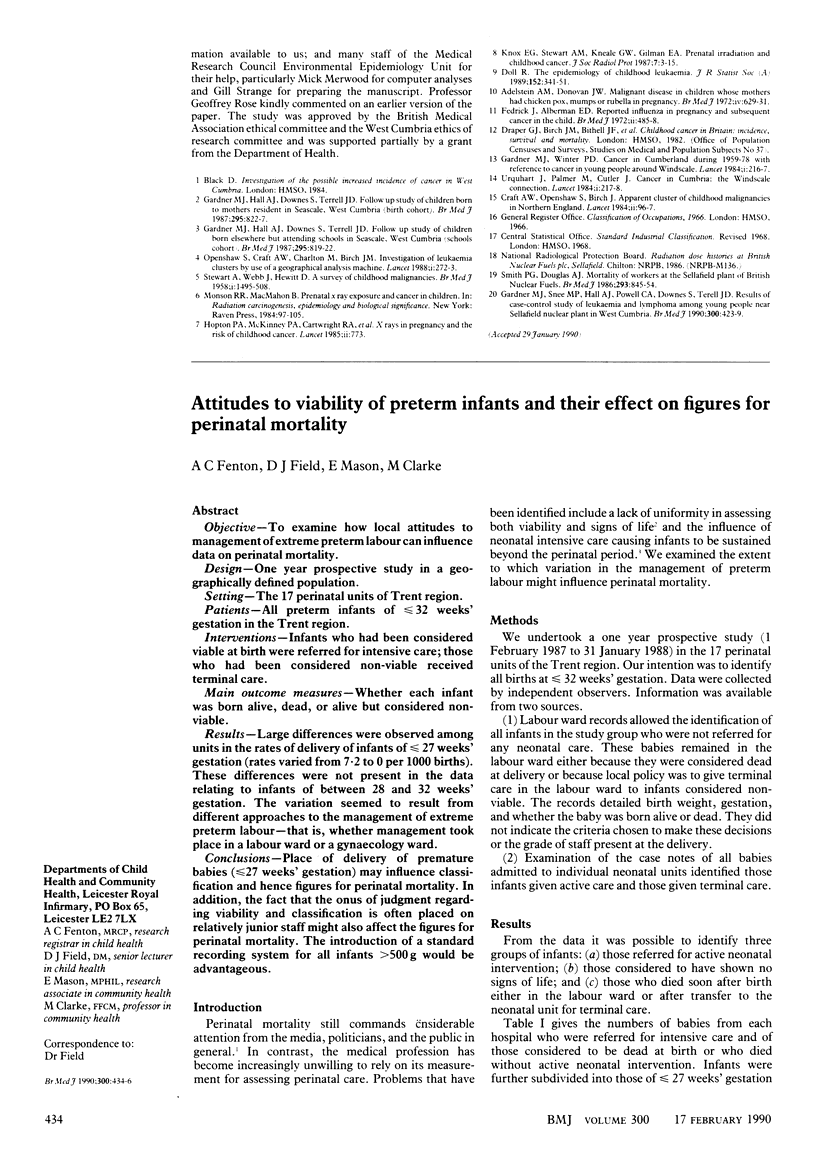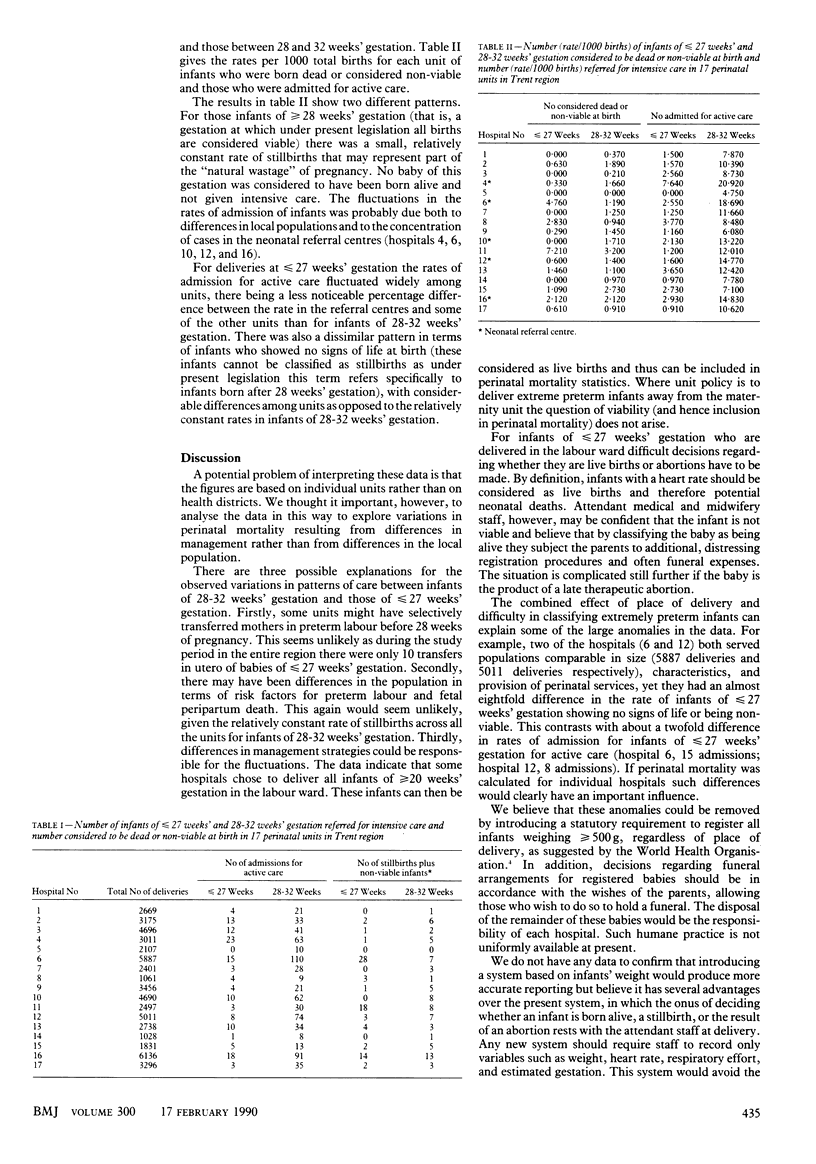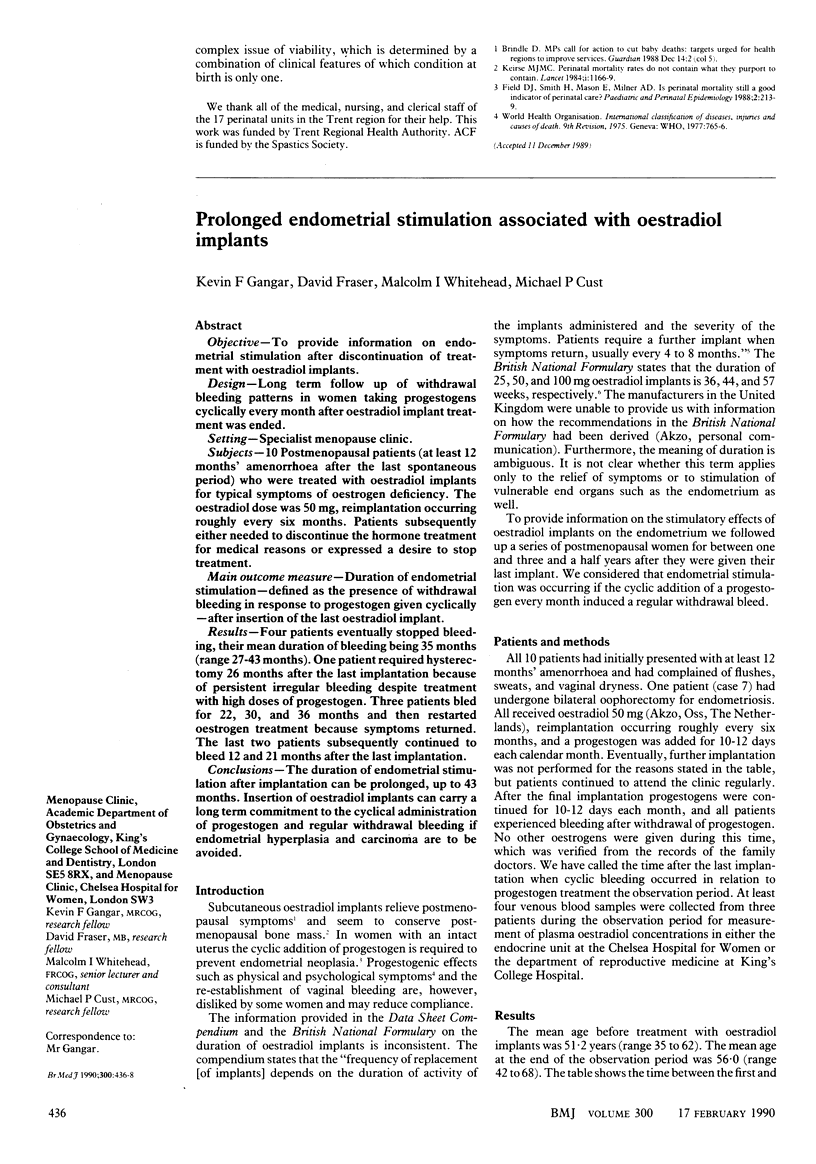Abstract
OBJECTIVE--To examine how local attitudes to management of extreme preterm labour can influence data on perinatal mortality. DESIGN--One year prospective study in a geographically defined population. SETTING--The 17 perinatal units of Trent region. PATIENTS--All preterm infants of less than or equal to 32 weeks' gestation in the Trent region. INTERVENTIONS--Infants who had been considered viable at birth were referred for intensive care; those who had been considered non-viable received terminal care. MAIN OUTCOME MEASURES--Whether each infant was born alive, dead, or alive but considered non-viable. RESULTS--Large differences were observed among units in the rates of delivery of infants of less than or equal to 27 weeks' gestation (rates varied from 7.2 to 0 per 1000 births). These differences were not present in the data relating to infants of between 28 and 32 weeks' gestation. The variation seemed to result from different approaches to the management of extreme preterm labour--that is, whether management took place in a labour ward or a gynaecology ward. CONCLUSIONS--Place of delivery of premature babies (less than or equal to 27 weeks' gestation) may influence classification and hence figures for perinatal mortality. In addition, the fact that the onus of judgment regarding viability and classification is often placed on relatively junior staff might also affect the figures for perinatal mortality. The introduction of a standard recording system for all infants greater than 500 g would be advantageous.
Full text
PDF


Selected References
These references are in PubMed. This may not be the complete list of references from this article.
- Field D. J., Smith H., Mason E., Milner A. D. Is perinatal mortality still a good indicator of perinatal care? Paediatr Perinat Epidemiol. 1988 Jul;2(3):213–219. doi: 10.1111/j.1365-3016.1988.tb00209.x. [DOI] [PubMed] [Google Scholar]
- Keirse M. J. Perinatal mortality rates do not contain what they purport to contain. Lancet. 1984 May 26;1(8387):1166–1169. doi: 10.1016/s0140-6736(84)91405-3. [DOI] [PubMed] [Google Scholar]


